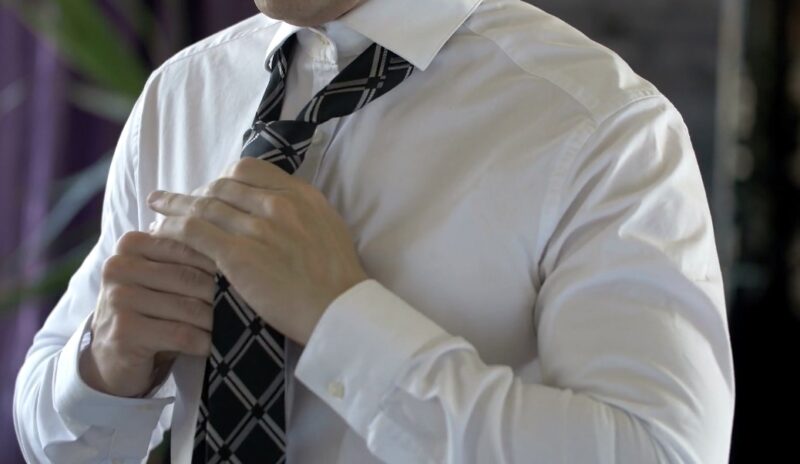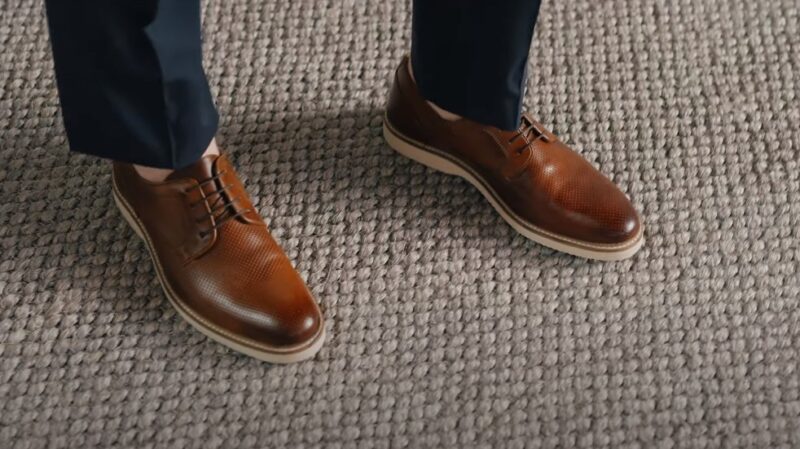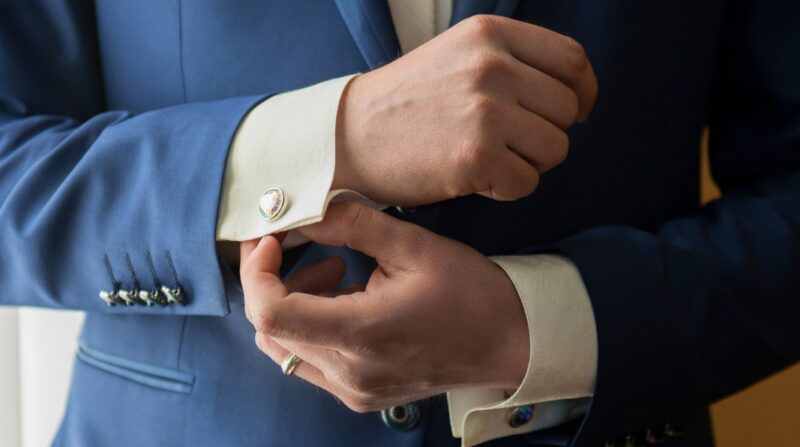Have you ever received an invitation with the phrase “cocktail attire” and felt uncertain about what to wear? You’re not alone. Understanding cocktail attire for men can be a bit of a puzzle, especially in a world where dress codes are constantly evolving.
Today, we’ll break down the key components of this dress code, and provide tips to nail the look every time.
Key Takeaways
- Cocktail attire for men is a semi-formal style that originated in the 1920s and 1930s, offering a balance of elegance and comfort.
- The essential components of cocktail attire include a well-fitted suit, dress shirt, tie or bow tie, dress shoes, and tasteful accessories.
- Fabric and fit are crucial in selecting the right suit, with different materials suited for different seasons.
- Accessorizing wisely is important; accessories should complement the outfit without being too flashy.
- Variations in cocktail attire can be made based on the type of event (business, wedding, seasonal) and body type, allowing for personal expression within the dress code.
The Basics
Cocktail attire for men typically involves a suit, a dress shirt, a tie or bow tie, dress shoes, and some optional accessories.
The key is to look polished but not overly formal. It’s about presenting oneself in a way that is respectful of the event’s semi-formal nature while allowing for personal style.
The attire should be less formal than a black-tie event but more sophisticated than everyday business wear. It’s a perfect opportunity for men to express their style within a framework of elegance and respectability.
Components of Cocktail Attire
1. The Suit

The cornerstone of cocktail attire is the suit. The ideal choice is a well-fitted, single-breasted suit. Dark colors like navy, charcoal, or dark grey are timeless choices. For warmer months or daytime events, lighter shades like light grey or blue can work well.
The suit should not be too tight or too loose, ensuring comfort and a sleek silhouette. A two-button suit is a classic choice, offering both modern appeal and timeless elegance. Tailoring is crucial; a well-tailored suit can elevate the entire outfit.
Suit Fabrics
Choose a fabric that complements the season:
- Wool, tweed, or a wool-blend are excellent for colder months, while cotton or linen suits are better for warmer weather.
- The fabric should be of high quality to ensure both comfort and durability.
- For a more luxurious look, fabrics like cashmere can also be considered, albeit at a higher cost.
- It’s important to consider the fabric’s weight and texture to ensure it is appropriate for the event and the season.
2. The Shirt

A crisp, button-down dress shirt is essential. White is a classic choice, but light pastel colors or subtle patterns can also be appropriate. The shirt should be well-ironed, fitting properly without being too tight.
For a more modern look, consider a shirt with a slight texture or a unique collar style. The collar should complement the lapel of the suit and the tie, creating a harmonious appearance.
3. Ties and Bow Ties

A tie or bow tie adds a touch of formality. Solid colors, classic stripes, or subtle patterns are safe bets. The tie should complement your suit and shirt.
For a bow tie, ensure it’s not too large or too small for your face. The color of the tie can be a place to add a personal touch, perhaps matching it with your pocket square or socks for a coordinated look.
4. Dress Shoes

Shoes should be clean and polished. Oxfords, loafers, or brogues in black or brown are suitable choices. Ensure they match your belt. The shoes should be comfortable, as they can make a big difference in your overall appearance and confidence.
For a more contemporary look, consider monk strap shoes or suede loafers.
5. Accessories

Accessories can elevate your outfit. A pocket square, a wristwatch, and cufflinks are great additions. Keep accessories tasteful and not too flashy.
The watch should be elegant and understated, complementing the rest of the attire. A leather belt, matching the shoes, helps in tying the whole look together.
Dos and Don’ts
| Do’s | Don’ts |
|---|---|
| Ensure your suit and shirt fit well. This is paramount for a polished look. | Steer clear of tuxedos or overly formal attire. You want to be elegant, not outshine the event’s formality. |
| Choose fabrics and colors that suit the season. This not only ensures comfort but also appropriateness. | Jeans, casual shirts, or sneakers are not appropriate. It undermines the cocktail attire’s elegance. |
| Well-maintained shoes make a big difference. They reflect attention to detail and respect for the occasion. | Stick to classic, understated colors. They convey sophistication and taste. |
| A few well-chosen accessories can complete your look. They should complement, not overpower, the outfit. | Keep patterns subtle and refined. They should add interest, not distract. |
Variations

- Business Cocktail: For a business cocktail event, stick to darker suits and more conservative accessories. This setting often requires a more professional look, reflecting both style and business acumen.
- Wedding Cocktail: This attire allows for more creativity. Lighter suits and unique accessories are acceptable. This is an opportunity to experiment with colors and patterns, keeping in mind the celebration’s tone.
- Seasonal Cocktail: Consider the season. Linen suits and lighter colors are great for summer, while tweed or wool suits are better for winter. Each season offers a chance to vary textures and colors appropriately.
Tips for Every Body Type
- Slim-fit suits enhance a tall and slim physique. Avoid overly baggy clothing. It’s important to have a suit that complements your height without looking oversized.
- Choose a suit that accommodates your shoulders and chest without being too tight. Tailoring might be necessary. The right fit will highlight your physique positively without restricting movement.
- Opt for a suit that creates a streamlined look. Vertical stripes can elongate your appearance. The right proportion in suit jackets and trousers can make a significant difference.
- Choose a suit that doesn’t cling too tightly but still provides structure. Darker colors can be more flattering. It’s essential to find a balance between comfort and a suit that shapes the body well.
FAQs
Can I wear a patterned suit for cocktail attire?
Yes, but choose subtle patterns like pinstripes or herringbone. Loud patterns can be too informal for cocktail attire.
Is it mandatory to wear a tie for cocktail events?
While traditional attire includes a tie, modern interpretations sometimes allow for a tieless look, especially in less formal settings. It’s best to gauge the event’s formality.
Can I wear loafers with cocktail attire?
Yes, loafers, especially leather ones, can be appropriate, provided they are polished and in good condition.
Are there any specific rules for pocket squares in cocktail attire?
Pocket squares should complement your outfit’s color scheme but not match your tie exactly. It’s a chance to add a subtle personal touch.
How do I choose the right belt for cocktail attire?
The belt should match the color and material of your shoes. It should be sleek and not too wide, fitting properly within the belt loops of your trousers.
The Bottom Line
Cocktail attire for men is about striking the perfect balance between elegance and comfort. It’s a versatile dress code that allows for some personal expression while still maintaining a sense of formality.
The key lies in the fit, the choice of colors, and the appropriate use of accessories. With these guidelines in mind, you’ll be well-equipped to dress sharply for your next event.
